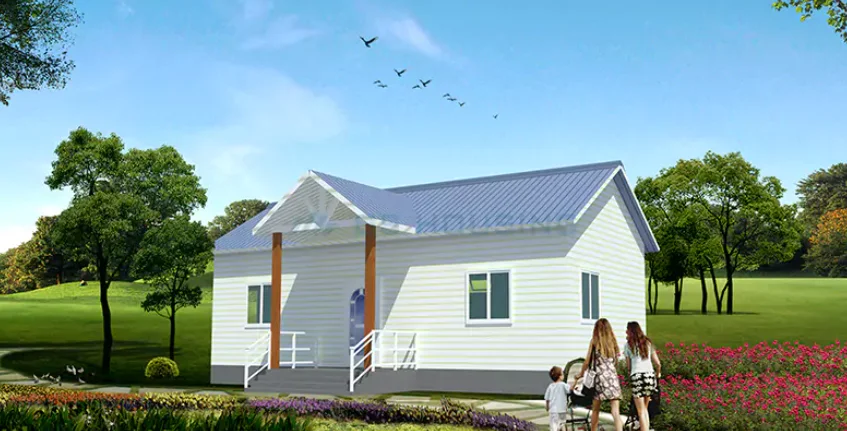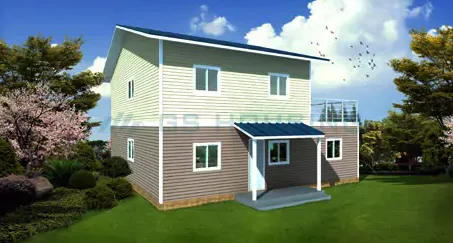Why Pre Built Container House Cut Project Timelines in Half
Why Pre Built Container House Cut Project Timelines in Half
Introduction
If you’ve ever been involved in a housing project, you probably know how easily schedules slip. A week of heavy rain, a delay in material delivery, or a shortage of workers can quickly snowball into months of waiting. For cities dealing with fast urbanization, or governments trying to relocate families after disasters, traditional construction simply doesn’t move fast enough.
That’s where pre built container house come in. Instead of building piece by piece on site, these houses are manufactured in a factory, delivered in modules, and assembled like giant Lego blocks. The result is a home that can be ready in weeks, not years.
One company that has made this process almost routine is GS Housing, a modular construction provider with six factories across China. Their flagship product for large-scale relocation projects is the Modular Resettlement House. It’s designed to shorten timelines without cutting corners on safety, comfort, or durability.

How Pre Built Container House Accelerate Construction
Factory production with automated assembly lines
In traditional builds, bad weather often stops work. In modular construction, most of the heavy lifting happens indoors. GS Housing manufactures its resettlement modules in fully equipped plants where machines cut, weld, and coat steel with pinpoint precision. A project doesn’t stall just because it rains for two weeks straight outside.
On-site installation through rapid hoisting and modular stacking
Once the modules leave the factory, they arrive on trucks, trains, or ships depending on the site location. Cranes then hoist them onto prepared foundations. One floor of housing can be installed in just one to two days. To anyone used to waiting months for walls to rise, the speed is almost shocking.
Parallel workflow combining foundation work and off-site manufacturing
Here’s a simple but powerful shift: while modules are being fabricated at the factory, site crews are preparing foundations. Instead of waiting for one step to finish before the next begins, both happen at once. For a relocation project that needs hundreds of homes, this overlap can shave months off the delivery schedule.
Features of GS Housing Modular Resettlement House
Steel frame with national-level safety certification
Every module is built from cold-formed steel beams and columns. The structures have been tested to resist magnitude 8 earthquakes and winds up to level 12. That’s serious resilience—essential for regions where housing must withstand extreme weather.

Prefabricated insulation, water, electrical, and interior finishes
These are not empty boxes. The walls have insulation, and the corners have pre-buried drains and wires, so that when installed, the family can move in without waiting for electricians, painters or plumbers.Flexible module combinations supporting single or multi-story resettlement housing
Modules can be arranged side by side for single-level units or stacked three stories high to form compact apartment blocks. Extra features like balconies, pitched roofs, and staircases can be added depending on the site and design needs. That’s what makes them well-suited for resettlement housing, where layouts vary project to project.
Installation Process of Modular Resettlement Houses
Module transport via road, rail, or ship
The units are designed with transport in mind. They’re strong enough to withstand vibration, stacking, and long distances. GS Housing has shipped modules thousands of kilometers—some projects even required ocean transport. The trick is to keep the module dimensions standardized so cranes, trucks, and containers can handle them smoothly.
On-site crane hoisting enabling one floor in 1–2 days
On arrival, cranes lift the modules onto pre-prepared foundations. Workers connect them horizontally and vertically. Because the wiring and piping are already integrated, the connection process is straightforward. Compared to brick-and-mortar buildings, it feels almost too simple.
Seamless module connection ensuring waterproofing and long lifespan
One concern with modular housing is “gaps” between units. GS Housing addresses this with precision joints, waterproofing layers, and reinforced corner fittings. The result is a tight, safe structure that can last over 20 years with normal upkeep.
Production Model Behind Fast Deployment
Six major factories with automated production lines
GS Housing runs plants in Guangdong, Jiangsu, Sichuan, Tianjin, and Liaoning, covering China’s busiest economic zones. Together they can produce around 200,000 modular units per year. For clients, this means capacity isn’t a bottleneck.
Standardized mass production with strict quality control
Modules come off the line like cars—each station handles a step, from steel cutting to welding to painting. Lean TPM management (think 6S workplace standards, regular inspections, zero-defect goals) keeps quality consistent. The company even introduced graphene powder coating in its paint shop, giving modules an anti-fade finish that can last 30 years.
Pre-finished modules reducing rework rate
In traditional projects, rework rates can reach 10–12%. By manufacturing indoors under controlled conditions, GS Housing keeps rework under 3%. That’s not just a number—it means fewer callbacks, fewer warranty claims, and faster project handovers.
Why Modular Resettlement Houses Support Smarter Urban Development
Quick response to post-disaster resettlement and emergency housing needs
After the Wenchuan earthquake and during the COVID-19 outbreak, GS Housing supplied thousands of units for emergency resettlement and quarantine camps. Some projects were set up in under two weeks. Speed like that isn’t just impressive—it saves lives.
Affordable housing solutions for growing urban populations
Urban relocation often involves moving entire communities. By cutting project time in half, governments reduce financing costs while families spend less time in limbo. That makes modular housing a practical tool for large-scale affordable housing initiatives.
Sustainable construction cutting waste and energy use
Traditional building sites can waste up to 30% of materials. GS Housing’s factory-based approach reduces construction waste by 70% and cuts energy use by around 50%. For cities trying to lower carbon emissions, that’s not a side benefit—it’s a requirement.
Conclusion
Pre built container house are no longer just an idea on the drawing board. They are working today, helping cities and companies deliver housing in half the time it used to take. GS Housing’s Modular Resettlement House System combines factory precision with on-site speed, offering a solution that’s safe, durable, and surprisingly flexible.
FAQs
Q1. How fast can GS Housing deliver a resettlement housing project?
Depending on the scale, projects can be delivered in weeks to a few months. For example, one floor of housing can be installed in one to two days once foundations are ready.
Q2. What safety standards do these modular homes meet?
The structures are tested to withstand magnitude 8 earthquakes and level 12 winds. With steel frames and non-combustible insulation, they are designed for a lifespan of over 20 years.
Q3. Can the layout be customized for different communities?
Yes. Modules can be combined horizontally or vertically, with options for staircases, corridors, balconies, and even pitched roofs. They can serve as family apartments, dormitories, classrooms, or offices depending on project needs.



